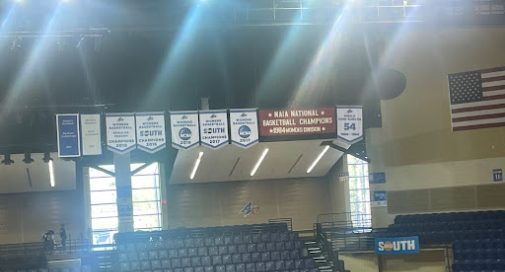By Emily Ostertag – [email protected] – Staff Writer | Jan. 21, 2015 |
Many UNC Asheville students work to pay their own way through school as tuition rates and loan debt continue to increase, according to university officials.
“I basically paid as I went. I mean, I didn’t get any loans and after financial aid ran out I was just paying myself,” said Sasha Thomas Hussey, UNCA alumnus and manager of the campus’ media design lab.
In 2007, 45 percent of traditional undergraduates — students between the ages of 16 and 24 — worked while enrolled full-time, while 80 percent worked while enrolled part-time, according to the National Center for Education Statistics.
“I usually worked at least two jobs at a time and sometimes three,” Hussey said. “First I worked in the recycling center on campus, and then I worked at Beaucatcher Cinemas on Tunnel Road. So, I was kind of combining different jobs. I think I was a tutor at some point and I worked with my dad, although I wasn’t getting paid for that.”
Hussey said in 2002, when he began college fresh out of high school, the yearly cost of full-time tuition and fees at UNCA was $2,954.
According to the cashier’s office, the cost of full-time tuition and fees for the 2014-15 academic year is $3,196.
Hussey said working multiple jobs to pay his tuition kept him a part-time student his entire undergraduate career.
“It took me seven years to graduate,” Hussey said. “There’s no hurry, you know.”
Hussey, 30, lives in Weaverville, and said he lived with his family in order to get by while paying his way through college.
“I wasn’t paying a full amount for rent and food. I think because I was working for my dad at the time, I was given a break on those living expenses,” Hussey said. “So it was kind of a unique situation.”
He said after graduating in 2009, living on his own proved to be a challenge, even though he did not have to contend with student loan payments.
“Making enough money at Papa John’s, that wasn’t easy,” Hussey said. “Minimum wage is not easy to live on at all.”
According to National Center for Education statistics, in 2011 the College Board estimated student loan volume increased from $23 billion during the academic year of 1992-93 to $100 billion during the academic year of 2007-08, with about $25 billion from private loan sources.
Mathilda Monroe, a 30-year-old environmental science student, said she works 20-23 hours a week in order to pay her tuition out of pocket.
“Never have I, where I’m paying for my own college, ever gotten any kind of a loans or financial aid,” Monroe said.
As a waitress and hostess at a downtown restaurant, Monroe said she makes almost as much during the summer as her husband, Nate, does building houses, but during the off-season her income suffers.
“In the summer, I did work full-time, but once school started I now work Friday, Saturday, Sunday and sometimes Wednesday,” Monroe said. “Although, now that this semester is kicking into high-gear, I don’t want to do that anymore.”
Monroe said the payment plan UNCA offers allows her to divide her tuition into more manageable amounts.
Phillip Turbyfill, UNCA’s former bursar, said Tuition Management Systems provides services the university cannot offer in-house.
“While a payment plan typically is not considered a loan, the federal government views a payment plan that is for more than three payments a loan. In being considered a loan, you have to provide the student with the same type of paperwork — truth and lending documents — which you would get if you went out and borrowed money for a car,” Turbyfill said. “Tuition Management Systems has the functionality to do that for us, and that’s also a reason why we don’t provide any other in-house payment plans. We utilize them so that we can stay in compliance with government regulations.”
Turbyfill said the number of students using this payment plan varies between 350-400 individuals per academic year.
“The fall semester will be closer to 300, and then there will be an additional number of students who pick up the plan for the spring semester,” Turbyfill said. “The student can do a plan for either the entire academic year or they can do it just for one semester.”
In comparison with other state universities, UNCA remains one of the least expensive, and this might be a desirable quality to returning or working students, Turbyfill said.
“The school has a good reputation, so I think a degree from here would be desirable, and it’s local and relatively inexpensive,” Turbyfill said. “For a four-year state university it’s going to be about as cheap as they can get.”
Monroe said she realized she wanted to return to college while working at her old customer service job, which she said could be incredibly frustrating.
“I saw the rest of my life before me, and I wasn’t saving. I wasn’t doing anything for any kind of a retirement. I was just going to be living paycheck to paycheck, and I wanted to go to school. I wanted to wait until I found something that I like, and something that was going to make me a lot of money. You can’t buy a boat with no money,” she said jokingly.
Categories:
Alternatives to Student Loans
January 21, 2015
0
More to Discover



















